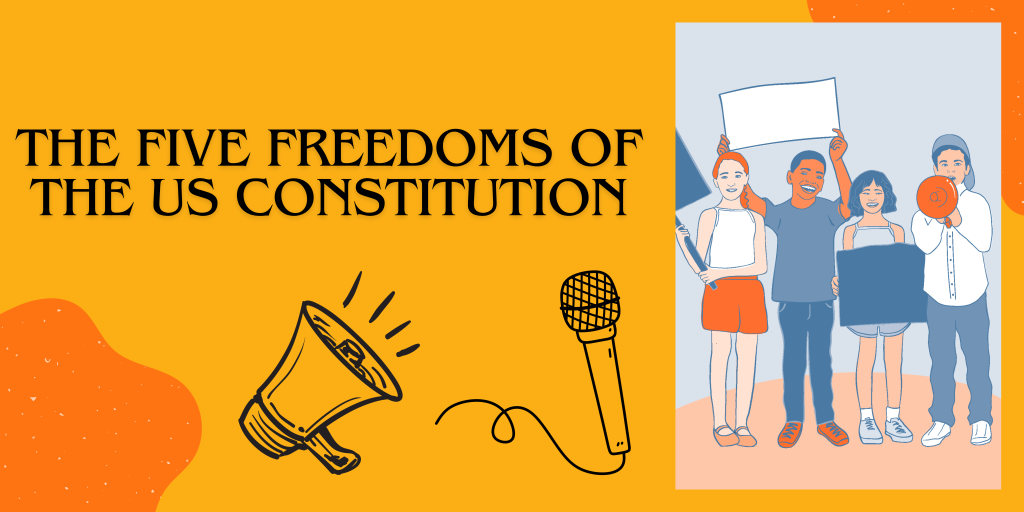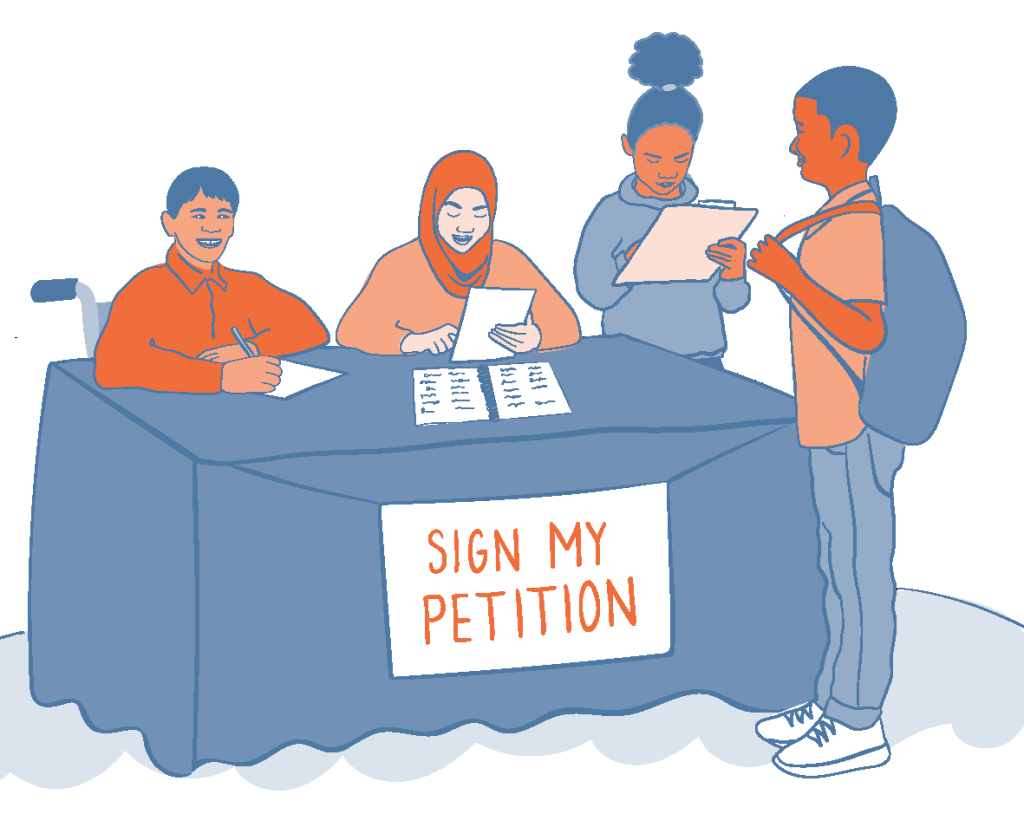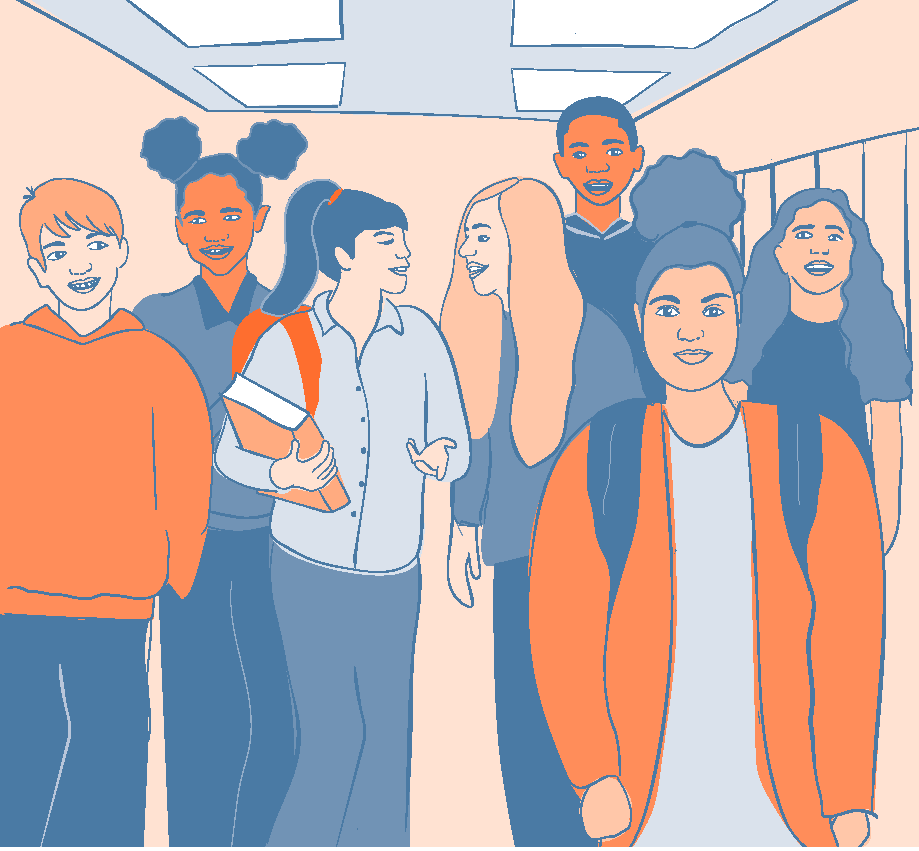Teach Kids Their First Amendment Rights

The First Amendment grants kids five monster privileges: freedom of religion, freedom of speech, freedom of the press, freedom of assembly, and the right to petition the government. In order to shape the world they want to live in, it is important that kids not only know these rights, but that they learn how to exercise them.
Below are ways that kids can use their voices and exercise their freedoms.
Write a Petition

Did you know that kids who are 13 or older have the power to write and sign petitions? If a kid sees something happen to a friend or family member in their hometown or classroom that they think violates one of their freedoms, they can start a petition. Have them include the following items, to make sure their petition is strong and clear.
STATEMENT OF PURPOSE: They should explain why they are starting this petition.
INFORMATION ABOUT THE ISSUE: They should educate others on the issue: What exactly is happening? Where is it occuring? Who is involved? Are people being harmed? Who or what is causing the harm?
IDEAS ABOUT WHAT ACTIONS COULD MAKE A DIFFERENCE: What are things that the government could do to help? Perhaps it’s stopping an action that it’s doing, or passing a local or federal law to help the situation.
REQUEST FOR SIGNATURES: Make sure kids know that this is the key part! They should have anyone who signs the petition include their name and contact information so that the signature is verifiable.
OTHER WAYS PEOPLE CAN HELP: Have them go beyond just getting signatures and let everyone who participates know that there are other things they can do to help, like contacting their local lawmakers or joining a protest.
Start a Protest

The First Amendment grants everyone, including kids, the freedom of assembly. Kids should know that this freedom comes with one stipulation though: the right only exists if people assemble peacefully and without violence. So if they want to start a protest, make sure they know that these are the things that fall under the right to assemble:
- Peaceful protests in public areas
- Marches in public streets for supporting a cause
- Parades celebrating an identity like LGBTQIA+ pride or a culture like Puerto Rican heritage
- Handing out pamphlets or flyers with information in public spaces
- Political rallies supporting political causes or candidates
- Canvassing voters’ homes to support a politician
Write an Article

Maybe one of the most powerful way for kids to have their voices heard is to write about what they see happening. Many schools have papers that allow kids to act as student journalists. If the kid in your life is interested in writing an article to shed light on an issue, make sure to share these tips with them:
- Articles should be well-researched. Have kids practice sound journalism by fact-checking and confirming quotes.
- Articles should be fair and balanced. Have kids acknowledge both sides of an argument.
- Don’t incite bad or illegal behavior. This includes violence or hatefulness toward others. A school or government will more likely have the right to censor an article if it spreads hate and causes harm.
- Don’t be mean spirited. Don’t make jokes at the expense of other kids, students, or faculty.
- Don’t copy. Plagiarism is never okay.
- Consider going independent. Kids who run a paper independently of their school have more freedom of speech rights. That would mean creating their very own newspaper, but all it would take is a computer and an idea to start!
Want more tips for how to empower the kids in your life? Make sure to check out the title below!
A Junior Library Guild Selection!
Chicago Public Library’s BEST BOOKS OF 2023!
The First Amendment grants kids and every other citizen five monster privileges: freedom of religion, freedom of speech, freedom of the press,
freedom of assembly, and the right to petition the government. If the First Amendment is everywhere in their lives, shouldn’t kids know more about it? Yes!
In Your Freedom, Your Power, middle grade readers get a focused look at their freedoms and rights through the lens of this all-powerful First Amendment. The book engages children in learning more about their country and their rights and responsibilities. Each section will answer key questions readers may have thought about like: Do I have the right to protest at school? Can I be punished at school for something I say on social media? Why can’t I wear whatever I want? Can I text whatever I want? While answering these questions and explaining fundamental legal concepts every kid should know, Your Freedom, Your Power shares the fascinating stories behind some of the most important legal cases and social movements that have affected kids’ lives and rights.

